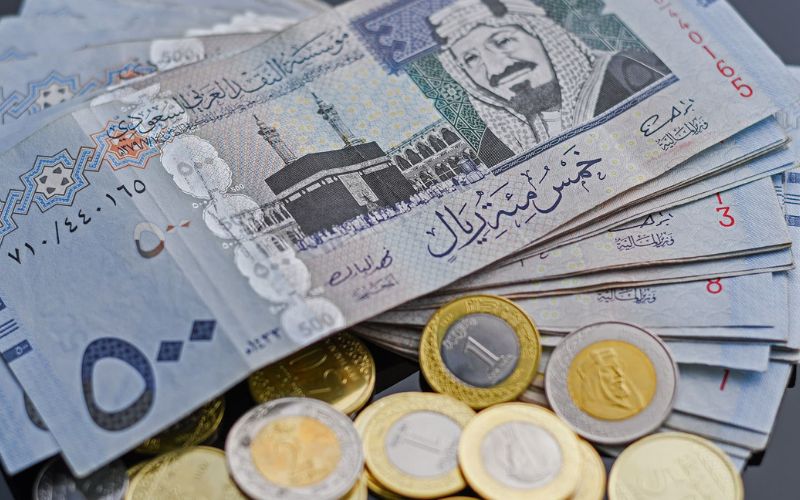In today’s globalized economy, currency conversion plays a crucial role in international trade, travel, and financial planning. For individuals engaged in business, travel, or personal financial management between Saudi Arabia and Pakistan, understanding the exchange rate between the Saudi Riyal (SAR) and the Pakistani Rupee (PKR) is essential. This article delves into the conversion of 500 Saudi Riyal into Pakistani Rupees, exploring the factors influencing the exchange rate, the historical context, and practical implications.
Introduction to the Saudi Riyal and Pakistani Rupee
Saudi Riyal (SAR)
The Saudi Riyal is the official currency of Saudi Arabia, abbreviated as SAR and symbolized as ﷼. It is subdivided into 100 halalas. The Riyal has been pegged to the US Dollar since 1986, maintaining a fixed exchange rate of approximately 3.75 SAR to 1 USD. This peg helps stabilize the currency’s value in the global market.
Pakistani Rupee (PKR)
The Pakistani Rupee is the official currency of Pakistan, abbreviated as PKR and symbolized as Rs. It is subdivided into 100 paisas. The PKR operates on a floating exchange rate system, meaning its value can fluctuate based on market conditions, economic policies, and global economic factors.
Current Exchange Rate
To determine how much 500 Saudi Riyal is worth in Pakistani Rupees, it’s essential to know the current exchange rate between SAR and PKR. Exchange rates fluctuate due to various factors, including economic data, geopolitical events, and market sentiment.
As of the latest update, the exchange rate is approximately 1 Saudi Riyal (SAR) = 82 Pakistani Rupees (PKR). Therefore, 500 Saudi Riyal can be converted as follows:
500 SAR×82 PKR/SAR=41,000 PKR\text{500 SAR} \times \text{82 PKR/SAR} = \text{41,000 PKR}
Thus, 500 Saudi Riyal is approximately 41,000 Pakistani Rupees.
Factors Influencing Exchange Rates
Several factors influence the exchange rate between the Saudi Riyal and the Pakistani Rupee:
Economic Indicators
Economic indicators such as inflation rates, interest rates, and GDP growth significantly impact exchange rates. A strong economy generally supports a strong currency, while economic instability can weaken a currency.
Political Stability
Political stability and governmental policies can affect investor confidence and, consequently, the exchange rate. Countries with stable governments tend to have stronger currencies.
Trade Balance
The balance of trade, which is the difference between a country’s exports and imports, also influences currency value. A country with a trade surplus (more exports than imports) will often see its currency strengthen.
Market Speculation
Currency traders and investors often speculate on future exchange rate movements based on expected economic conditions. This speculation can cause fluctuations in the currency value.
Historical Context
To provide a more comprehensive understanding, examining the historical exchange rate trends between SAR and PKR can be insightful. Historically, the PKR has experienced significant fluctuations due to various economic and political challenges in Pakistan.
Past Trends
In previous years, the value of the Pakistani Rupee has depreciated against major currencies, including the Saudi Riyal. Factors such as inflation, political instability, and trade deficits have contributed to these fluctuations. Conversely, periods of economic reform and stability have led to appreciation.
Impact of Global Events
Global events, such as changes in oil prices (Saudi Arabia’s primary export), geopolitical tensions, and international trade agreements, also affect the SAR/PKR exchange rate. For example, a rise in oil prices can strengthen the Riyal due to increased revenue from oil exports.
Practical Implications
For Travelers
For travelers between Saudi Arabia and Pakistan, understanding the exchange rate is crucial for budgeting and financial planning. Currency exchange services and international money transfers should be approached with awareness of the current rates and potential fees.
For Businesses
Businesses engaged in cross-border trade must account for currency fluctuations in their pricing strategies and financial planning. Hedging strategies and currency risk management can help mitigate the impact of exchange rate volatility.
For Investors
Investors with interests in either Saudi Arabia or Pakistan should consider exchange rate movements as part of their investment strategy. Currency exchange risks can affect returns on investments, and understanding these risks is vital for making informed decisions.
Currency Exchange Services
Various services are available for converting currencies:
Banks and Financial Institutions
Banks often provide currency exchange services with varying rates and fees. It’s advisable to compare rates across different banks to get the best value.
Currency Exchange Bureaus
Currency exchange bureaus, both physical and online, offer competitive rates for currency conversion. However, be cautious of service fees and potential discrepancies between advertised and actual rates.
Online Platforms
Online currency converters and money transfer services offer convenience and often provide real-time exchange rates. These platforms can be useful for quick conversions and transfers.
Future Outlook
Economic Developments
Future economic developments in both Saudi Arabia and Pakistan will influence the SAR/PKR exchange rate. Monitoring economic policies, international trade agreements, and geopolitical events will be essential for understanding potential trends.
Technological Advancements
Advancements in financial technology, such as blockchain and digital currencies, may also impact currency exchange dynamics. Staying informed about these developments can provide insights into future currency trends.
Conclusion
The conversion of 500 Saudi Riyal to Pakistani Rupees, at approximately 41,000 PKR based on current rates, highlights the importance of understanding exchange rates in various contexts. Economic factors, political stability, and global events play crucial roles in influencing currency values. For individuals and businesses engaged in financial transactions between Saudi Arabia and Pakistan, staying informed about exchange rate trends and using reliable currency conversion services are essential for effective financial management.
By understanding these dynamics, you can better navigate the complexities of international finance and make informed decisions regarding currency exchange and financial planning.




